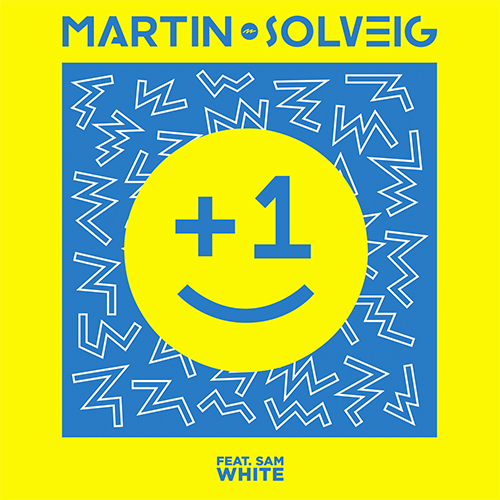If you want this website to work, you must enable javascript.
In early March, the organizing committee for the upcoming Paris Olympics released its official promotional poster, featuring familiar Parisian landmarks—the Eiffel Tower, the Arc de Triomphe, the Dôme des Invalides—dropped into a brightly colored and surrealistic landscape of stadiums, Olympic rings, and cheering crowds. Something was conspicuously missing, though. The poster depicts the Dôme des Invalides, commissioned by Louis XIV and repository of Napoleon’s tomb, without the gilded Christian cross that has adorned its pinnacle since its construction in the late seventeenth century. Instead of a cross, the poster shows a simple spike, like the one on top of the Chrysler Building.
French conservative lawmakers were outraged. Nicolas Meizonnet of Marine Le Pen’s National Rally complained that the omission of the cross represented “wokeism” at its fawning worst. Other politicians on the right accused the organizers of erasing France’s distinctive history and national identity.
The Dôme des Invalides, considered a masterpiece of baroque architecture, was originally a royal chapel commissioned by Louis XIV as part of the Hôtel des Invalides, a hospital for wounded soldiers that is now a French army museum. In 1861 Napoleon’s remains were transferred to the Dôme. Napoleon was an enemy of the Catholic Church, or at least of the papacy and the Papal States, which he regarded as challengers to his goal of French-dominated European republicanism. Still, Napoleon received the Catholic last sacraments before his death in exile on Saint Helena in 1821. Although Les Invalides is no longer a religious edifice, a Catholic Mass is still celebrated in the Dôme on May 5, the anniversary of Napoleon’s death.
Blame laïcité, the militant secularism that has been official French policy since the revolution and tries to confine religious expression strictly to private life. But the missing cross on the Olympics poster isn’t quite analogous to France’s current ban, for example, on wearing a crucifix (or a hijab) to class at a state school. It’s the deliberate alteration—and thus, falsification—of an image of an existing cross, one that the French government itself permits in the interest of historical accuracy and architectural integrity. A closer analogy may therefore be the Stalinist practice of airbrushing out of photos of the Great Leader any subordinates who had fallen out of favor.
In fact, official policy hasn’t even been at issue with the Olympics poster. Its creator, Ugo Gattoni, a leading commercial illustrator (Hermès scarves are one of his specialties), explained to the media that he had no “ulterior motive” for omitting the cross in his depiction of Les Invalides. Gattoni said that his aim hadn’t been to make his images “accurate” but to place them “within a surrealist and celebratory universe.” His supporters point out that his poster (actually a pair of interlocking posters) paints the Eiffel Tower a festive but non-realistic pink and depicts a Métro train running through the Arc de Triomphe.
But Gattoni’s “celebratory” ethos is actually an ethos of genteel skittishness. It is an ethos that other designers of commercial products adopt whenever they come up against Christianity’s symbols, especially its central one. In 2017 the German supermarket chain Lidl used a photo of Santorini’s Church of the Anastasis on labels of its yogurt and other Greek-derived products. The Lidl labels photoshopped out the multiple crosses atop the church’s iconic blue domes. In 2023 the luxury automobile brand Porsche drew criticism for editing out a statue of Jesus from a television commercial featuring a Porsche 911 speeding along a bridge spanning Lisbon’s Tagus River. The crosses that adorn St. Basil’s Cathedral in Moscow are often blurred out in images featured on calendars, paper napkins, and jigsaw puzzles.
How to account for this? There may be a desire not to offend Muslims, who in France at least now account for 10 percent of the population, according to official statistics from 2019–2020. Incidents of destruction of crosses in European churches and similar sacred venues by radical Muslims are not uncommon. Alternatively, Europeans may be wary of the politicization of religion that seems to be a feature of the U.S. culture wars and may remind them of their own centuries of religious strife after the Reformation: Donald Trump hawking Bibles and Joe Biden proclaiming his ardent Catholicism despite hosting a major fundraising gala on Holy Thursday, one of his church’s most solemn memorials. “There’s a reluctance now to use religious symbols because they’re associated with some people’s very questionable motivations,” says Notre Dame religious studies professor Robin M. Jensen, author of The Cross: History, Art, and Controversy.
But more disturbingly, there may be a sense that secularism has so pervaded the culture of France and elsewhere in the West that the symbols of Christianity, which shaped that culture for centuries, aren’t viewed so much as dangerous as irrelevant and even embarrassing. Some 51 percent of the French metropolitan population aged eighteen to fifty-nine professes no religion at all, according to government statistics. Catholicism, once France’s preeminent faith, now commands only 29 percent of the population; among Catholics, only 8 percent attend Mass regularly.
It would not be surprising if Gattoni had erased the cross atop Les Invalides from his poster simply because he considered it insufficiently “celebratory” of a culture that has largely emptied itself of any religion, much less Christianity. It’s like the illustration on the €20 note ubiquitous in Western European currency: Gothic stained-glass windows with intricate tracery, but displaying none of the images from the lives of Christ and the saints that adorn the pointed windows of real-life medieval cathedrals and abbey churches. It’s infra dig to be overtly Christian—and nobody cares anyway.
Gattoni’s Olympics poster, with its pink Eiffel Tower and myriad of engaging details, is certainly colorful and pretty. But contemplating the culture it represents is like contemplating the vast empty space of transparent air and aquamarine water around the spike where Les Invalides’ cross should be. One wonders how long the West can sustain itself on empty prettiness once faith is gone.
Charlotte Allen taught medieval history and literature at the Catholic University of America.
First Things depends on its subscribers and supporters. Join the conversation and make a contribution today.
Click here to make a donation.
Click here to subscribe to First Things.
Image by DXR via Creative Commons. Image cropped.
Comments are visible to subscribers only. Log in or subscribe to join the conversation.
Want more articles like this one delivered directly to your inbox?
Sign up for our email newsletter now!
source














Post comments (0)